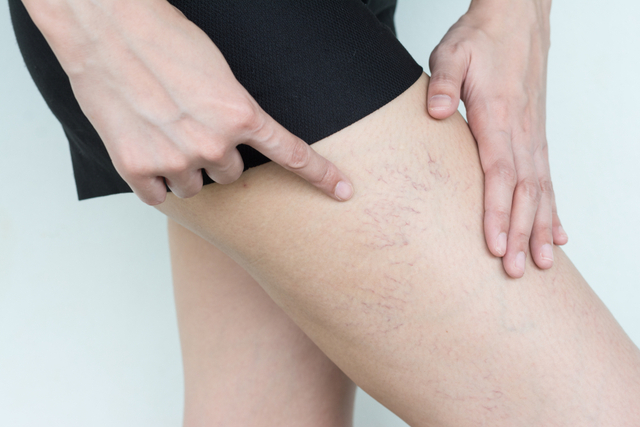If you suffer from varicose veins, you know that they are unsightly and you may be bothered by their appearance. Sometimes they can be painful, which is often when people seek treatment. Whether they are painful or not, should you be concerned about varicose veins? Read on to learn more about varicose veins and what complications can arise.
Risk factors for varicose veins
The biggest risk factors behind varicose veins are aging and pregnancy, which means women are more prone to getting them. Vein walls lose some of their elasticity as we age, which means that blood isn’t moving as effectively through the veins as before. The surrounding supportive muscles that help push the blood through the veins also weaken. Varicose veins are often a problem in pregnancy as this condition increases the volume of blood in the body but decreases the flow from the legs to the pelvis. If you have a family history, you are more prone to getting varicose veins. Since extra weight puts additional pressure on the veins in the legs and feet, obesity is a concern as well. People who work in jobs that require prolonged standing or sitting are more prone to getting varicose veins as this inhibits blood flow in the legs and feet.
Symptoms
Varicose veins are easy to spot by their telltale purple and blue, twisted, bulging appearance in your legs. Varicose veins don’t always cause pain, but when they do, it’s uncomfortable. Many patients report a burning, throbbing and swelling in the affected leg and increased pain after standing or sitting for a long period of time. Patients may also have an achy or heavy feeling in the legs. The diseased vein may cause bleeding and itching and appear raised, pushing the skin outward. The vein may become hardened and have color changes or you may have a skin ulceration near the ankle, which is a cause for concern.
When medical attention is needed
Often varicose veins can be improved with conservative measures such as getting exercise, elevating the legs and wearing compression stockings. Complications are rare, but require urgent medical attention. Painful ulcers can form in the skin near varicose veins, usually near the ankles. A discolored spot on the skin is an indication that an ulcer is forming and requires medical attention. If you have swelling in your legs, you could be developing a blood clot in a deep vein in your leg and this requires immediate medical attention. If you have any bleeding around the vein near the skin surface, seek medical attention.
To learn more about varicose vein treatment, please call 817.893.2699 for a consultation.

